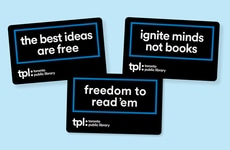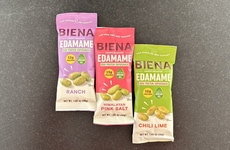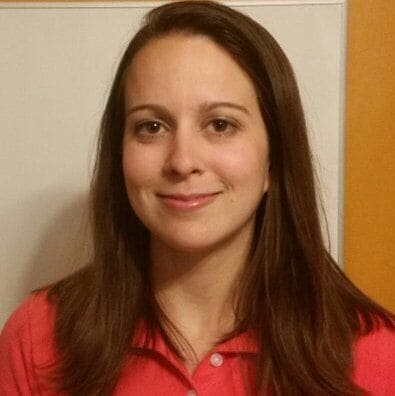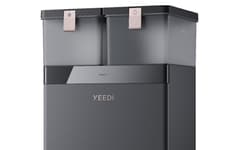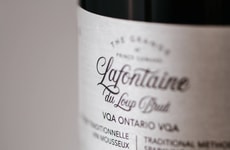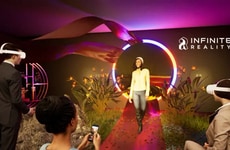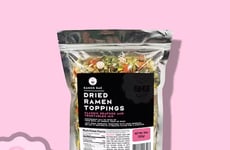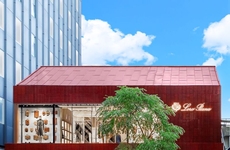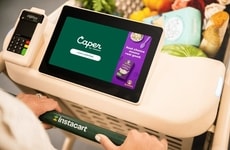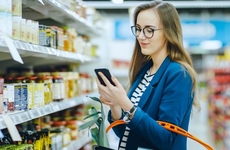Dana Celona, Concept Development Specialist at Wawa, Inc.
Riley von Niessen — March 18, 2017 — Business
Wawa Inc. is a convenience store and gas station company that has locations all around the United State’s East Coast. It’s headquarters are in Pennsylvania. Trend Hunter chatted with Dana Celona, a Concept Development Specialist at Wawa, Inc. She considered the value of getting involved with consumers by creating a culture that’s warm and community focused, being constantly collaborative, and connecting with the industry on a firsthand basis.
Can you tell us a little about yourself and your role at Wawa?
I’m a Concept Development Specialist for our product development team here at Wawa. We’re under the marketing group and we work in the test kitchen. We’re pretty much responsible for developing the product from innovation, all the way to store rollout. My role is about working on long term products and platforms, and also working with my team on running our innovation process. We collect a lot of menu trends, pay attention to what else is happening in the industry, and report on it.
How does your team generate great ideas? Do you have certain rituals to make creativity happen?
We do what we call benchmarking, where we’ll go to different cities and test out different foods that are really popular in the area. We also just compile lists of things that we’d like to try, then go to the grocery store, get the ingredients we need, and just sit down together and try them. It’s a lot of trial and error, and we do that at least twice a month.
What are some barriers to innovation? How do you get around them?
We serve a lot of different customers here at Wawa, so a lot of the time we’re trying to figure out who exactly our target is. Sometimes we want to be more innovative, but it depends on how much our customers are really able to trust us with this at the time. You see a lot of things in bigger cities sometimes that are really big, but you have to look at your own customers first to get an understanding of whether or not it’s something that they’re really interested in. It’s all about taking trends and innovative ideas and adapting them to your own brand, attaching our own lens is how we get around that.
How do you identify trends? What resources does your team use to spot trends and insights?
We subscribe to Datassential, they’re our main trend partner. We use a lot of different industry publications as well, we follow various food blogs, go out to try what food trucks have to offer, and then we use the Data Essential Menu Adoption Cycle, to help us fit where trends are in a 5-10 year cycle so we can pick and choose what we want to jump on.
Do you have specific rituals for resetting to be creative?
I think it's more about just being collaborative on a constant basis than having a specific ritual. It’s great to just sit at a table and bounce ideas off one another and allow everyone to contribute their own perspective. After doing that for around half an hour, you can end up with something really innovative.
Has there ever been an instance where another industry has influenced an innovation at your company?
I can't think of one specific industry right now, and that’s a big part of why we’re looking forward to coming to Future Festival. We want to try taking a lot more learnings from industries outside of ours, because we can see that doing so has a lot of potential.
What are some examples of things you can do to create a culture of innovation?
I think having ground rules are helpful, as they give people a safe space to be creative. This is something that we really do with our once a month sessions, where everyone just has free reign to explore whatever they’d like to. Getting out of the office itself is also important, just being out and experiencing different innovations firsthand can help to foster a more creative culture.
What do you think your industry will look like in 10 years?
I think there will be more automation in the future. Even in just the last few years, we’ve noticed a huge draw towards more mindful living in the industry, and its spreading to more people that might not have been as concerned about leading a healthy lifestyle before as well.
What’s the most unconventional thing you have done to get creative inspiration?
What we do in our benchmarking is a little strange sometimes. For example, we’ll just all go out to a new restaurant that’s proving to be popular and order every single thing on the menu. Then we’ll sit there and analyze it. While this might not be that unconventional in the food industry, being able to experience everything allows us to get ahold of the big picture better and stirs up inspiration.
In general terms, what do you believe is the best way to connect to your consumers?
I think that a big part of it is getting really connected to communities. For us, this starts with our store employees and just creating a culture that’s very warm and focused more locally. Getting involved in this way has really helped with our brand awareness and connecting to our consumers. Because people feel so connected to us and our store associates, they’re never afraid to tell us what they think.
Can you tell us a little about yourself and your role at Wawa?
I’m a Concept Development Specialist for our product development team here at Wawa. We’re under the marketing group and we work in the test kitchen. We’re pretty much responsible for developing the product from innovation, all the way to store rollout. My role is about working on long term products and platforms, and also working with my team on running our innovation process. We collect a lot of menu trends, pay attention to what else is happening in the industry, and report on it.
How does your team generate great ideas? Do you have certain rituals to make creativity happen?
We do what we call benchmarking, where we’ll go to different cities and test out different foods that are really popular in the area. We also just compile lists of things that we’d like to try, then go to the grocery store, get the ingredients we need, and just sit down together and try them. It’s a lot of trial and error, and we do that at least twice a month.
What are some barriers to innovation? How do you get around them?
We serve a lot of different customers here at Wawa, so a lot of the time we’re trying to figure out who exactly our target is. Sometimes we want to be more innovative, but it depends on how much our customers are really able to trust us with this at the time. You see a lot of things in bigger cities sometimes that are really big, but you have to look at your own customers first to get an understanding of whether or not it’s something that they’re really interested in. It’s all about taking trends and innovative ideas and adapting them to your own brand, attaching our own lens is how we get around that.
How do you identify trends? What resources does your team use to spot trends and insights?
We subscribe to Datassential, they’re our main trend partner. We use a lot of different industry publications as well, we follow various food blogs, go out to try what food trucks have to offer, and then we use the Data Essential Menu Adoption Cycle, to help us fit where trends are in a 5-10 year cycle so we can pick and choose what we want to jump on.
Do you have specific rituals for resetting to be creative?
I think it's more about just being collaborative on a constant basis than having a specific ritual. It’s great to just sit at a table and bounce ideas off one another and allow everyone to contribute their own perspective. After doing that for around half an hour, you can end up with something really innovative.
Has there ever been an instance where another industry has influenced an innovation at your company?
I can't think of one specific industry right now, and that’s a big part of why we’re looking forward to coming to Future Festival. We want to try taking a lot more learnings from industries outside of ours, because we can see that doing so has a lot of potential.
What are some examples of things you can do to create a culture of innovation?
I think having ground rules are helpful, as they give people a safe space to be creative. This is something that we really do with our once a month sessions, where everyone just has free reign to explore whatever they’d like to. Getting out of the office itself is also important, just being out and experiencing different innovations firsthand can help to foster a more creative culture.
What do you think your industry will look like in 10 years?
I think there will be more automation in the future. Even in just the last few years, we’ve noticed a huge draw towards more mindful living in the industry, and its spreading to more people that might not have been as concerned about leading a healthy lifestyle before as well.
What’s the most unconventional thing you have done to get creative inspiration?
What we do in our benchmarking is a little strange sometimes. For example, we’ll just all go out to a new restaurant that’s proving to be popular and order every single thing on the menu. Then we’ll sit there and analyze it. While this might not be that unconventional in the food industry, being able to experience everything allows us to get ahold of the big picture better and stirs up inspiration.
In general terms, what do you believe is the best way to connect to your consumers?
I think that a big part of it is getting really connected to communities. For us, this starts with our store employees and just creating a culture that’s very warm and focused more locally. Getting involved in this way has really helped with our brand awareness and connecting to our consumers. Because people feel so connected to us and our store associates, they’re never afraid to tell us what they think.
Trend Themes
1. Community-focused Innovation - Disruptive innovation opportunity: Incorporating community-centric approaches into product development and company culture to enhance brand awareness and consumer connection.
2. Collaborative Ideation - Disruptive innovation opportunity: Creating a collaborative environment where team members can freely share ideas and perspectives to generate innovative concepts for products and platforms.
3. Industry Cross-pollination - Disruptive innovation opportunity: Exploring and learning from industries outside of their own to gather insights and apply innovative ideas in the convenience store and gas station industry.
Industry Implications
1. Food and Beverage - Disruptive innovation opportunity: Leveraging food trends, innovative menu ideas, and culinary experiences to develop new products that appeal to customers and drive business growth.
2. Retail - Disruptive innovation opportunity: Creating a warm and community-focused culture within retail stores, encouraging customer engagement, increasing brand loyalty, and enhancing the overall shopping experience.
3. Automation - Disruptive innovation opportunity: Embracing automation technologies to streamline operations, improve efficiency, and meet the growing demand for convenience and mindful living in the convenience store and gas station industry.
2.4
Score
Popularity
Activity
Freshness


